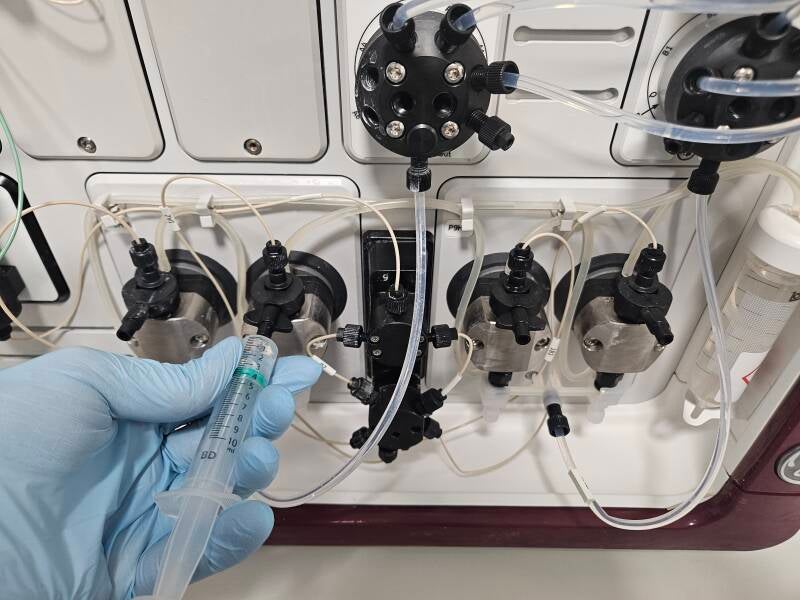
What is Siphoning and Why is it Important?
Siphoning occurs in a chromatography system due to the tubing flow path's configuration. It happens when the outlet point is positioned lower than the reservoir, creating a vertical distance that drives flow under gravitational pressure. In chromatography systems, another scenario can occur where one pump is active while the other is idle. This can lead to a phenomenon where the active pump creates a vacuum or low-pressure area that causes fluid to be drawn from the inlet line of the idle pump.
To counteract siphoning:
- Pump flow restrictor valves are installed.
- These valves remain closed under gravitational pressure and only open when the pump creates enough pressure to overcome it.
Importance:
- Prevents flow when pumps are idle.
- Avoids unwanted contamination between the A & B inlet lines.
When to Perform a Siphoning Test
- Annually: It is best practice to perform the test at least once a year.
- When Suspected Issues Arise: Indications of a faulty pump flow restrictor valve include:
- Increased intake from the reservoir.
- Inconsistent purification results.
- Unstable UV & Conductivity readings.
How to Perform the Siphoning Test
Performing the test is quick and straightforward, typically taking about 5 minutes. In addition to our step-by-step guide, we have created a short easy to follow video for your assistance.
Materials Required:
- A container with DI water.
- A suitably sized syringe to purge the system pumps.
1. Prepare the Setup:
- Place a container filled with DI water on top of the instrument and Immerse inlets A1 and B1 into the container.

2. Prime the Pumps:
- Prime both A and B pumps using a syringe.

3. Test the Pump Flow Restrictor Valves:
- Disconnect an outlet tube from the flow restrictor valve (.e.g. 2A) at the system pressure monitor.
- Observe for 1–2 minutes.
- Repeat the process for the other outlet, e.g. 2B.
- If a sample pump is installed, perform the test using the buffer inlet and disconnecting the sample pump flow restrictor valve (2S).

4. Results:
- The presence of flow from either outlet while the pump is idle suggests a failure in the pump flow restrictor valve. Possible causes include:
- Blockage preventing valve closure.
- Defective seals.
Further investigation and potential valve replacement may be required.
Additional Notes:
- The procedure is demonstrated on an AKTA Pure system but is applicable to any AKTA Chromatography system with a pump flow restrictor valve installed. There are variations between system models such as a single outlet from the pump flow restrictor valve as opposed to two. It is important to familiarise yourself with the system flow path before attempting this procedure.
- Important: This test is specific to pump flow restrictor valves only. The system flow restrictor serves a different purpose and requires a separate procedure (refer to the relevant AKTA User Manual for details).
For further assistance, feel free to contact us.

Add comment
Comments